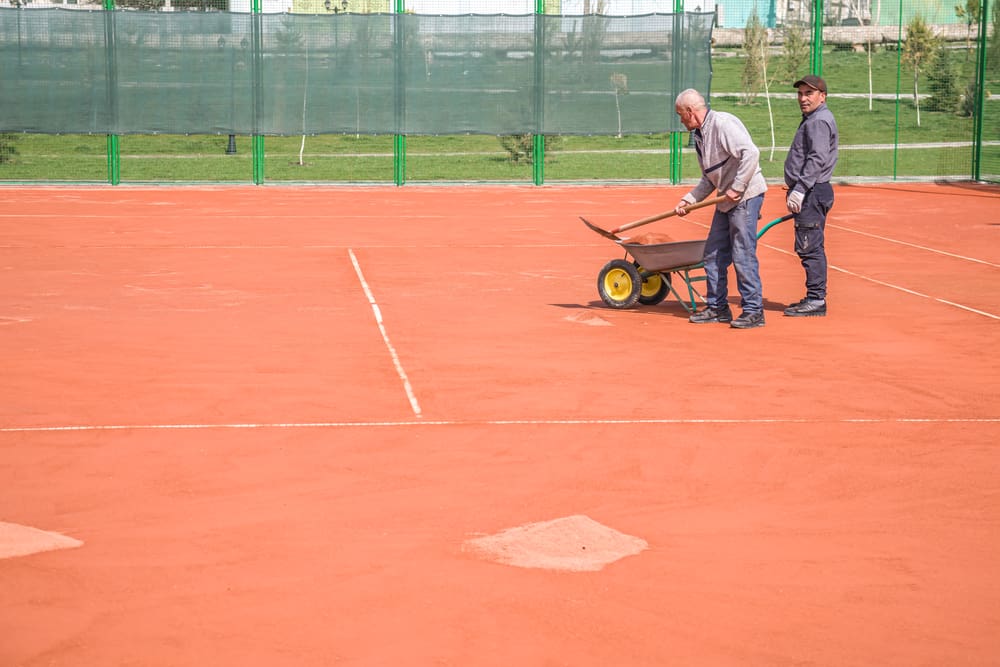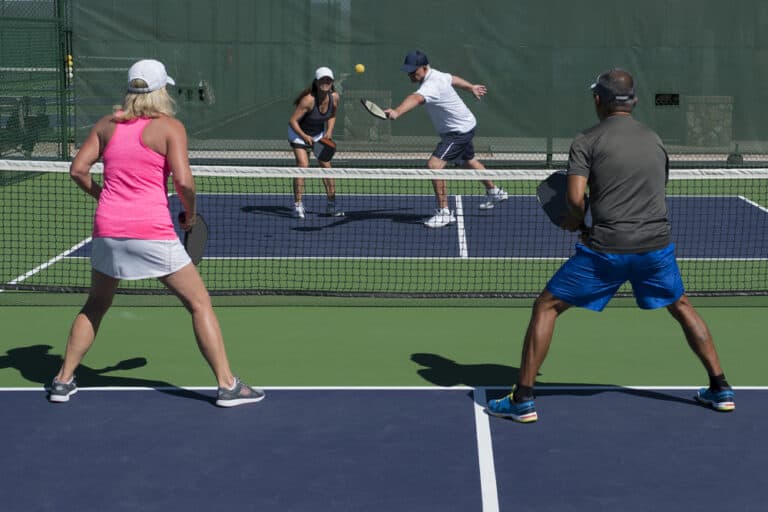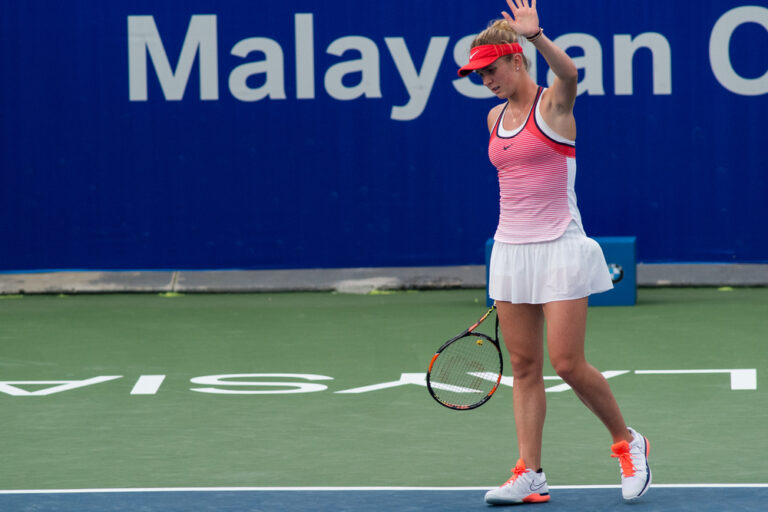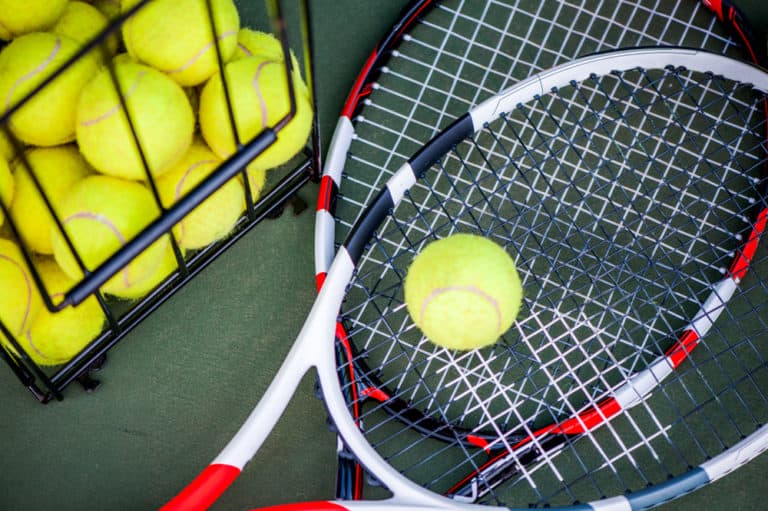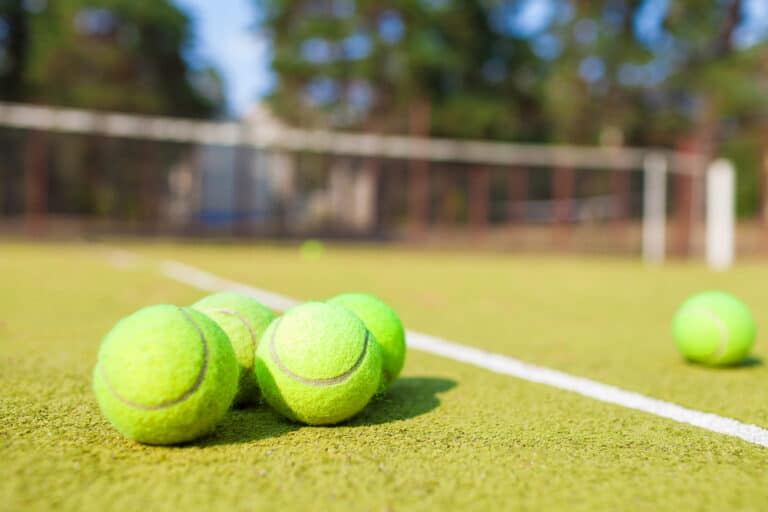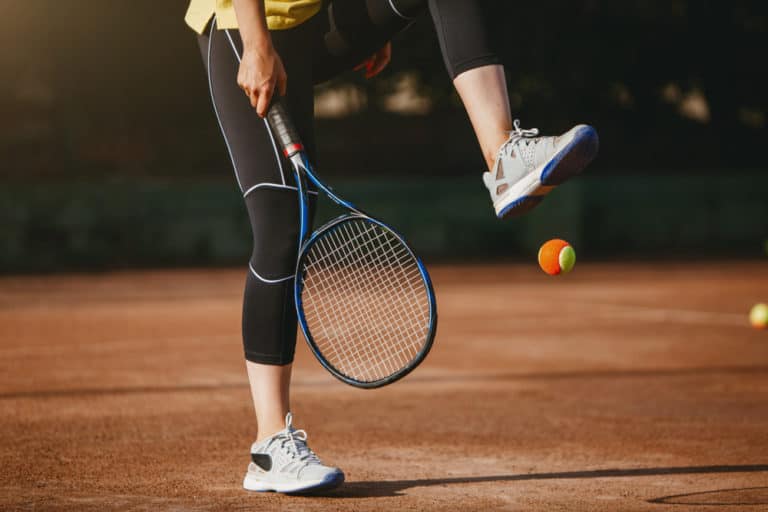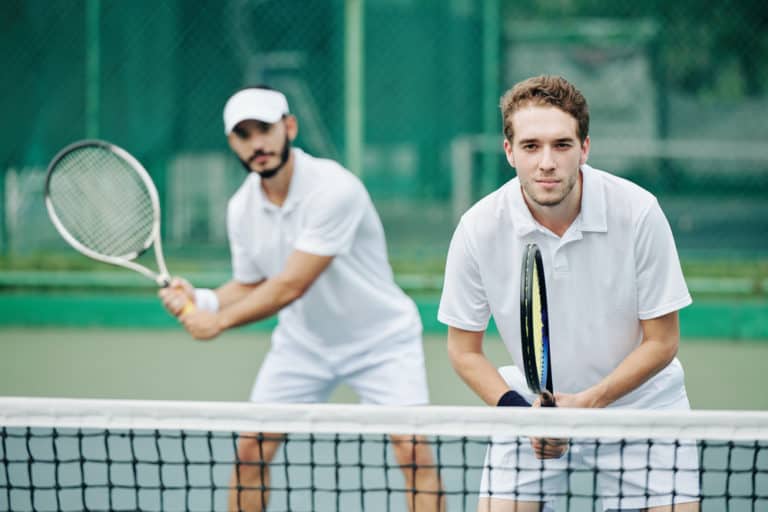Why Do They Put Sand On Tennis Courts?
Sometimes when playing tennis, you may notice piles of sand intruding from within the ground beneath your feet onto the playing surface. You can feel a scratch in your shoes and eyes, leading you to scratch your head. Where does the sand on the playing surface come from, and why is it there? While you rinse the sand from your hair, consider how tennis courts are installed and maintained by industry experts.
Sand on tennis courts is used to perform maintenance, extend their lifespan, and modify the bounce and speed of tennis balls on the surface. Several tennis court types use sand as a stabilizing ingredient in their construction, and on the upper layers adding sand increases friction and grip.
Adding sand to a tennis court is intended to change, or preserve, its texture. But sand is not merely an ingredient for a tennis surface; it plays an essential part in the management of the court and the development of a particular playing style for the surface. To fully understand what happens when sand is applied or removed from a tennis court, it is vital to consider the value and impact of its sand.
What Is Sand Used For On A Tennis Court?
Sand is used in both the maintenance and building of a tennis court. On tennis courts, and especially on artificial grass varieties, sand added between the surface’s fibers limits the extent of wear and tear, while on hardcourts, adding sand in the upper layer is a method used to manage the speed of the surface.
Due to added friction, adding sand to the resin on a hardcourt will reduce the speed at which a ball bounces off the surface but also increases bounce height unless a smoother coat is painted over it. Added amounts of sand help to provide more grip for a player’s footing, and in some cases, such as on clay courts, sand will help players move faster or add the ability to slide into a shot.
Sand Helps With Tennis Court Maintenance
While artificial tennis courts are primarily cost-free, regular maintenance is required. Periodically sand will have to be added between the fibers of some surfaces to replace granules lost by erosion and frequent use. Specific sections on a tennis court, such as the baseline, may see more action and, consequently, need more frequent attention.
Adding sand to artificial grass court or carpeted tennis courts stabilizes their surface and increases players’ speed. Evenly layered sand will ensure a consistent playing surface, and granules layered deeper below improve the longevity of the court and prevent surface damage. A court with inlaid sand requires regular brushing and deep cleaning to avoid erosion and improve drainage.
Hardcourt maintenance with sand mainly revolves around filling cracks and voids in asphalt or concrete. Patches, or even the entire length, of the court, are covered by an even coat of acrylic resurfacer containing coarse sand granules intended to fill gaps. The initial layer is rough, but after applying a layer of paint containing finer rounded particles, the surface may be smoother, with reduced friction.
Sand Is Used In The Making Of Tennis Courts
Tennis courts usually consist of four layers, each with a different role in creating a playing surface. Some of the layers of a tennis court rely on sand for their creation and maintenance, and in most cases, it is hardly even noticeable. But the absence of any layers would create a poor tennis court prone to breakage, cracks, and gathering pools of water, frequently referred to as birdbaths.
The four main layers in the creation of a tennis court:
- The first layer, at the bottom, is the formation, which forms the flat surface to build a court on and prevents intrusion by natural elements.
- The foundation layer comes second, with the main purpose of assisting with drainage and preventing frosting underneath, which could damage the court.
- The regulating base, the third layer, creates a stable and flat surface on which the final layer rests.
- The final and upper layer is the wearing surface, the visible portion of a tennis court. Tennis court classification usually relies on the materials within the wearing surface layer.
In most cases, a tennis court’s formation and foundation layers may contain a lot of sand to provide a flat, stable surface with a high drainage level. The regulating base of a court can be made from many different types of material, some of which may require sand to fill or construct a solid layer. Loose or visible sand, however, will have its source in the upper straits of the wearing surface.
Sometimes sand is mixed in with crushed bricks and shale to create characteristically red clay tennis courts across Europe and South America. Sand helps to even out surfaces and, when adequately watered and rolled in, serves as a bonding agent. Loose sand sometimes comes to the surface on clay courts due to play but adds moveability to players and a higher bounce to the ball.
On synthetic clay, grass, and carpet tennis courts, significant levels of sand are inlaid between the grooves of the fibers which constitute their wearing surface. The sand interspersed between the tufts provides a more stable surface to tread on, assists with drainage, and provides a measure of bounce.
Hardcourts for tennis have wearing surfaces of acrylic or polyurethane with sand mixed in for texture layered in, followed by cushioning and concrete or asphalt regulating bases. The wearing surface includes sand as a strengthening and painting ingredient to ensure everything stays in place. The added sand also increases friction and grip on the surface, providing bounce and slowing down the game.
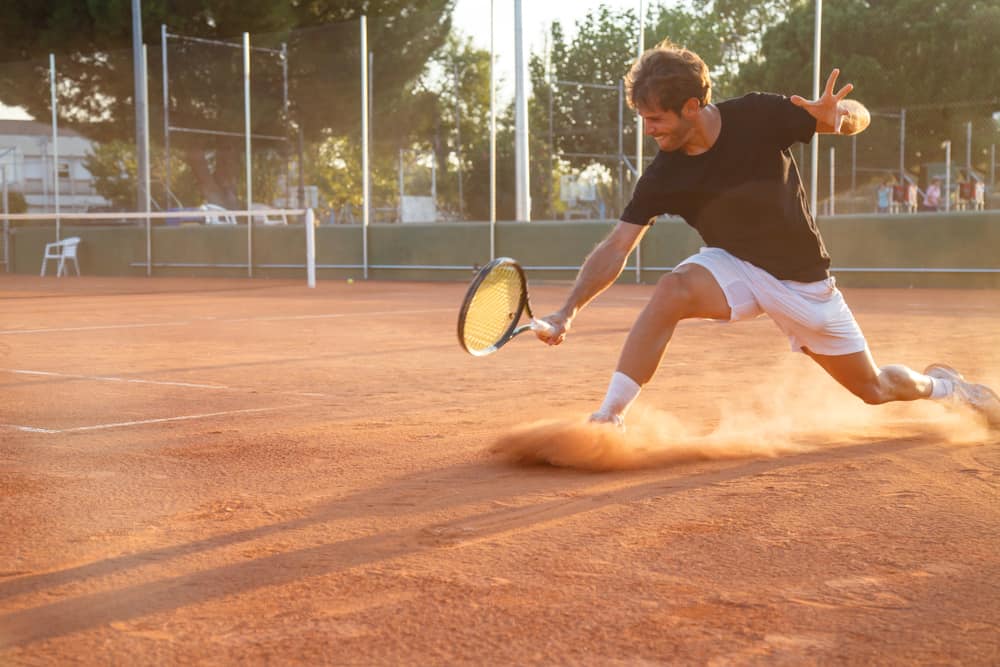
Should There Be Loose Sand On A Tennis Court?
Loose sand on top of a tennis court can be a big problem for the passage of play, may cause risks to players’ health, and will increase the frequency that you must do thorough maintenance. Round sand particles not suitable for inlaying deeper into wearing surfaces or porous, insufficiently resilient, wearing surfaces can lead to the escape and scattering of inlaid sand across a tennis surface.
When significant levels of sand rise to the surface, the court becomes slippery and inconsistent. Any balls that hit the sand may have unpredictable bounce but also unexpectedly slow down due to increased friction. With unstable footing, players will also find it more difficult to control their shot power and targeting.
Sand scattered across tennis courts increases players’ likelihood of injuries from falls, muscle tears, and sprained ankles. Uneven and slippery surfaces make it harder for players to keep their balance and will discourage players from moving their feet, leading to overstretching and unnatural postures.
The surface itself will also wear down faster because the protective layers within have started to diminish, and the increased friction from the surface sand will increase abrasion, and the surface will deteriorate over time.
Conclusion
Sand on tennis courts ensures that their surfaces keep a steady pace and do not wear out too often. Adding more sand to a wearing surface will help players keep their footing, reduce the speed of the ball, and increase the bouncing height. But there should not be a lot of loose sand on the surface of a tennis court, as this negatively affects the game and risks players’ health.
References
- https://www.masterclass.com/articles/types-of-tennis-courts
- https://www-ubitennis-com.translate.goog/blog/2021/12/23/come-si-misura-la-velocita-dei-campi-da-tennis/?_x_tr_sl=it&_x_tr_tl=en&_x_tr_hl=en&_x_tr_pto=sc
- https://www.tennis.com.au/learn/courts-and-surfaces/surfaces/artificial-grass
- https://tt.tennis-warehouse.com/index.php?threads/sand-tennis-courts.79961/
- https://en.wikipedia.org/wiki/Tennis_court

